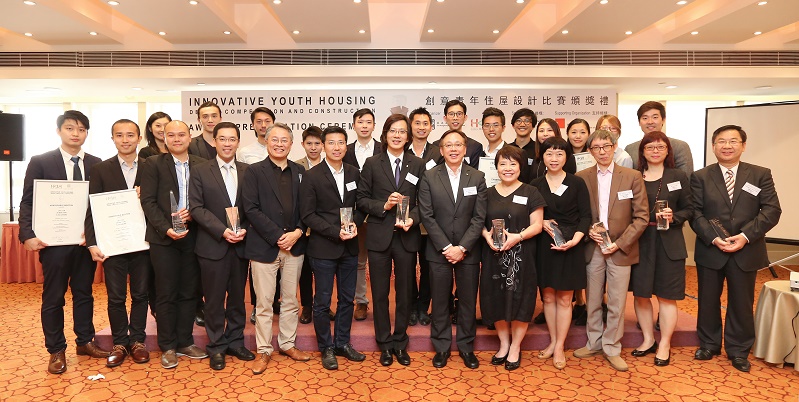Words from the HKIA President – Vincent Ng, JP
Competition as a Breeding Ground of Young Architects
Vincent Ng, the President of HKIA spoke to PRC Magazine about his appointment in 2015. He has endeavoured to create a platform for Hong Kong architects, especially the young ones, for showcasing their ideas. “It is a fact that young architects enjoy less opportunities to design and exhibit their artworks. In the hope of keeping alive their ambitions, events with less social restrictions are highly encouraged to motivate such architects. ”Ng said.
Ng pointed out that in the commercial world, the dilemma faced by architects and creative professionals is similar: return of investment transcends the desire to build liveable buildings. “The Buildings Ordinance and its related legislation are extremely rigorous in Hong Kong,” he said. “This has a far-reaching impact on the enthusiasm and ambition of young architects.”
Placing the design competition firmly under the spotlight, Ng says that at this time HKIA is celebrating its 60th Anniversary, the current social affairs we are facing mean that society as a whole should be stirring up public discussions with youth housing being one such area that needs to be addressed.
User-oriented Design for the Most Liveable Places
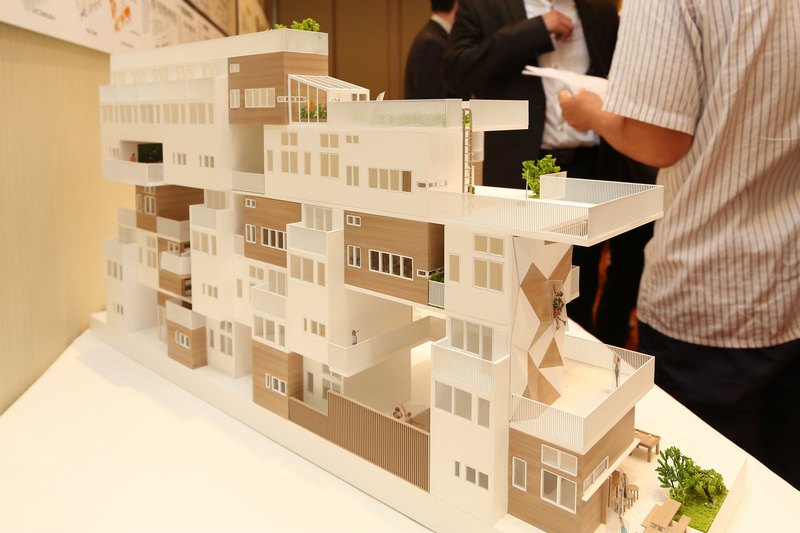
In Hong Kong the design of many dwellings has long invited criticism, whether it’s focused on narrow living rooms that barely hold a family, washrooms where users are barely able to move, says Ng. “Developers are very keen in cramming all facilities into a few hundred feet of units but do we really need them all? Also in the face of high land prices and various land-planning problems, we urged the participants to solve the problems practically,” he added.
Therefore, this competition sought to be different, adv
ising participants not to blindly divorce themselves from reality but to try and understand young people’s lifestyles in a bid to design units in a more ‘bottom-up’ manner, meaning, by consulting the end users at the start of the design process. In order to create inspired designs, youths and students from South Asian ethnic groups were invited by the Hong Kong Federation of Youth Groups and other voluntary organisations, to attend a number of brain-storming interflow sessions with architects seeking to find a vision of liveable youth housing.
By setting the threshold for participation between the ages of 18 and 36, this allowed participating architects who were in the same age group to understand the needs of the end users fully. As Ng states, “Let’s help the young find their own solutions to the problems they face.”
From Inspiration to Exploration
When discussion focuses on problems facing Hong Kong’s housing market and the city’s future housing needs, we should remember that the greatest anxiety is being faced by the youngest generations who worry greatly about their futures.
“The supply of public housing is still lagging behind the long-term demand, while young people are unable to afford their own flats. We hope that some of the ideas expressed in the Competition will eventually provide a transitional option to them,” Ng said. “I hope this competition can create greater media exposure for the critical problems of youth housing, raise public awareness of the issues and facilitate greater discussion.”
As Vincent Ng’s tenure as HKIA President draws to an end, the Institute stated that it remains committed to promoting excellent architecture for the positive development of society.
Words from the Members of OC – HKIA Vice President, Dr. Rosman Wai
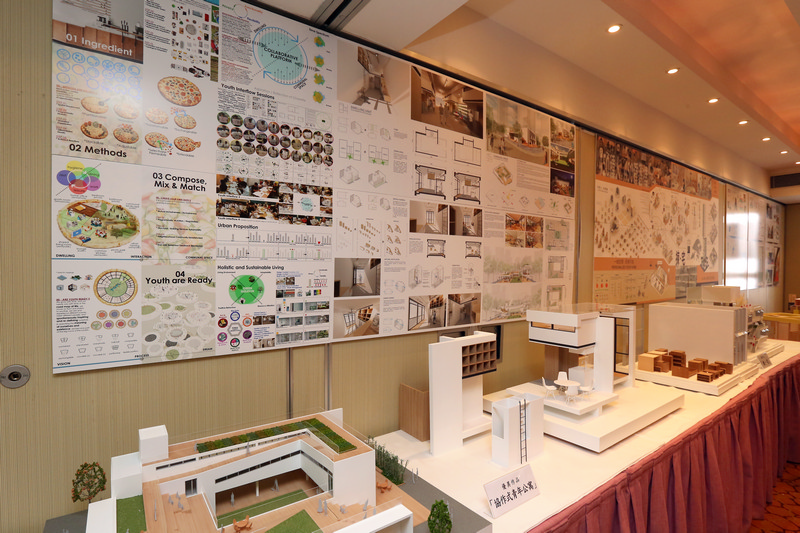
Space Offers up a World of Possibilities
Dr Rosman Wai, The Hong Kong Institute of Architects (HKIA) Vice President, highly appreciates the innovative proposals collected in this competition. Contrary to other popular design competitions, here there has been a historical change in judging criteria whereby the height of building storeys was relaxed. “Sometimes, breaking the rules can promote greater creativity,” she said smiling.
“At present, every room for habitation in any building is mandated to have a height of not less than 2.5m or up to 3.5m measured from floor to ceiling. Allowing the height to be increased by 200cm (to 3.7m), great flexibility was provided to boost the participants’ creativity.”
Architects, Workshops and Youths
Wai states that the design process is very interesting. “In the past, we had to arrange a venue for the participants and gave them a free hand; at this time, we had arranged 8 workshops to provide an opportunity for them to interflow with other youth.”
53 teams of young architects (108 individuals in total) registered in the Competition. The Jury first selected ten design proposals based on their creative methodologies. Five finalist teams were then selected. These five teams then attended several youth-interflow sessions to learn about young people’s requirements on youth housing. The process involved over 200 youngsters who contributed their ideas through a process of discussion, sketching and model making in collaboration with the finalist teams.
“We are convinced participants can consolidate the youths’ ideas and expectations with individual spatial and aesthetics character by communicating effectively with the youths. It is totally different from designs based on impractical imaginations,” Wai stressed. “The judging criteria, therefore, placed innovation and project feasibility at the top of the agenda.”
Wai lamented that the present situation in Hong Kong is that most residential units designed by developers are family-oriented, with the only differentiation being the size or material selection. However, the age, income and number of family members varies greatly and such diverse needs shouldn’t be ignored by designing living spaces with a one-size-fits-all approach. She encourages all young architects to explore the housing problem in depth, implementing different design methods, exploring the potential of space to a greater extent so that one day we might have a more dynamic housing market.
Words from Members of OC – Competition Organising Committee Chairman, Associate Professor, Paul Chu
From the Office to the Masses
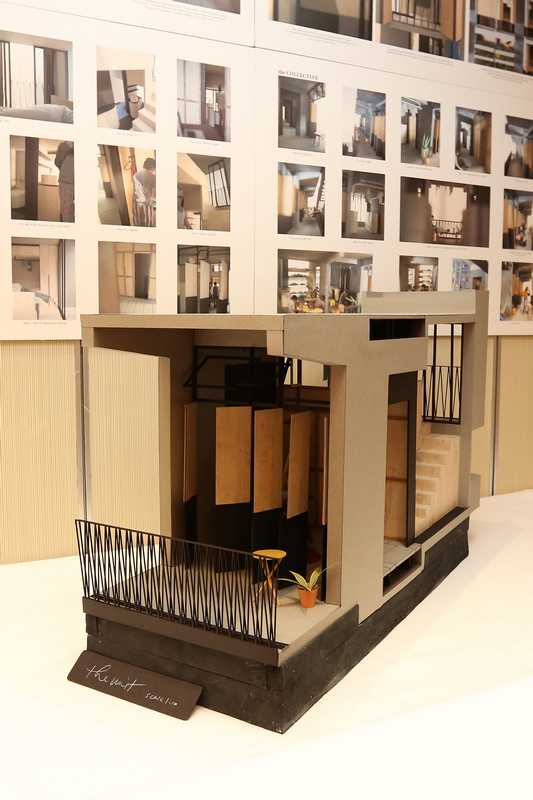
Architects should not only bury themselves in their work, but interact with the public in order to fully understand society’s evolving needs. Associate Professor Chu observed that Hong Kong has only had a very few architecture competitions since the handover in 1997. “Most competitions are relatively conceptual, with most of the winners never seeing their designs put into practice, he said. “During the planning meetings, the Organising Committee highly emphasised that a full scale 1:1 mock-up flat had to be built according to the champion team’s design.” He continued that one great benefit to this would be that the Competition would be much more meaningful if it allowed the public to feel a space as it is expressed by the designers, as opposed to use their own imagination to assume how the space would be after being built. Given this great opportunity, Chu said he hoped it would encourage the young architects to really think “out of the box” and create relevant, user-friendly designs.
Design Wisely, Share Willingly
Receiving criticism from some members of the public that using 150 square feet as the Competition’s criteria was simply an attempt to legitimise developers to build such small accommodation in the future, Professor Chu clarified that this should be considered solely as a design challenge, not a subjective thought. “Participants should not only focus on the horizontal plane but the three-dimensional (including 3.7m in height) in order to consider the possibility brought by space overall,” he stressed.
With all five of the finalist design schemes, they re-promote the idea of neighbourhood. Taking the winning team’s design as example, units are inter-connected so space can be interchangeable. As a result, users can communicate and share easily.
“In fact, a luxurious residential design is not necessary, what is important is to be flexible. Relationships that exist within an established neighbourhood, no longer a priority to many people, are in fact of the utmost importance in a healthy, fully functioning society,” Chu lamented. “Architectural design is not simply the application of a simplistic ‘1 + 1 = 2’ type formula for addressing the needs of the community.”
Words from Mr Marco Wu – Chairman of Hong Kong Housing Society
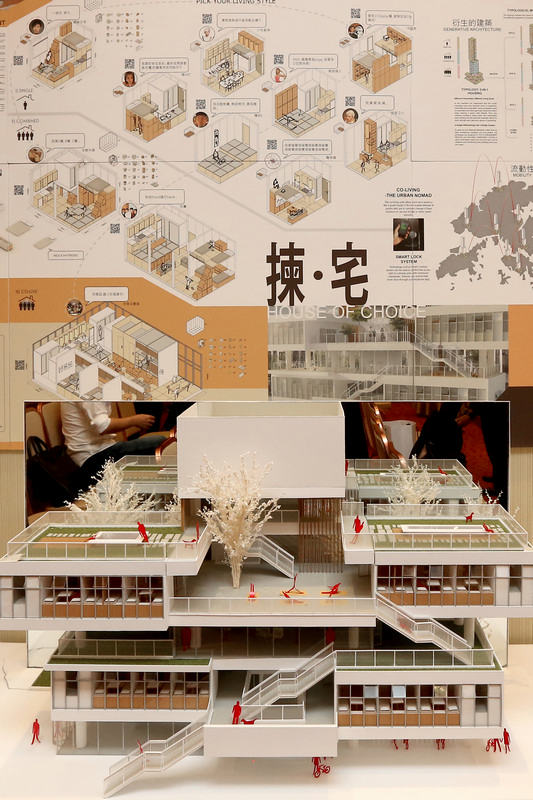
Over the years, the Hong Kong Housing Society has responded to the changing needs of the community by providing different housing schemes for the people of Hong Kong, including rental estates, Sandwich Class Housing Scheme, Senior Citizen R
esidences Scheme and subsidised sale flats, etc.
In recent years, public concern on the housing needs of young people has been on the rise. In light of the compact living environment in Hong Kong, small flats can serve as a starting point for the younger generation to get onto the housing ladder. Organised by The Hong Kong Institute of Architects, the Innovative Youth Housing Design Competition and Construction aims to encourage young architects to make creative use of the limited space to design a practical yet comfortable home for young people.
Through this sponsorship, the Housing Society hopes to inspire discussions in society on youth housing and provide reference of designs and planning of youth housing for the industry. Besides, the Housing Society also sponsors the survey of the “Housing Aspirations of Youth in Hong Kong” conducted by the Hong Kong Federation of Youth Groups to gauge young people’s views on their current living conditions and housing aspirations.
 The Housing Society mainly sponsors the prizes for the Innovative Youth Housing Design Competition and Construction and production costs of the winning design exhibition. The exhibition will showcase a 1:1 real mockup unit of the winning entry which enables the architects to illustrate their elaborate design to the general public.
The Housing Society mainly sponsors the prizes for the Innovative Youth Housing Design Competition and Construction and production costs of the winning design exhibition. The exhibition will showcase a 1:1 real mockup unit of the winning entry which enables the architects to illustrate their elaborate design to the general public.
As a close partner of Government, the Housing Society will continue to work in line with the housing policy and fulfil the role of “Housing Laboratory” when necessary to study and develop different housing projects for society.














